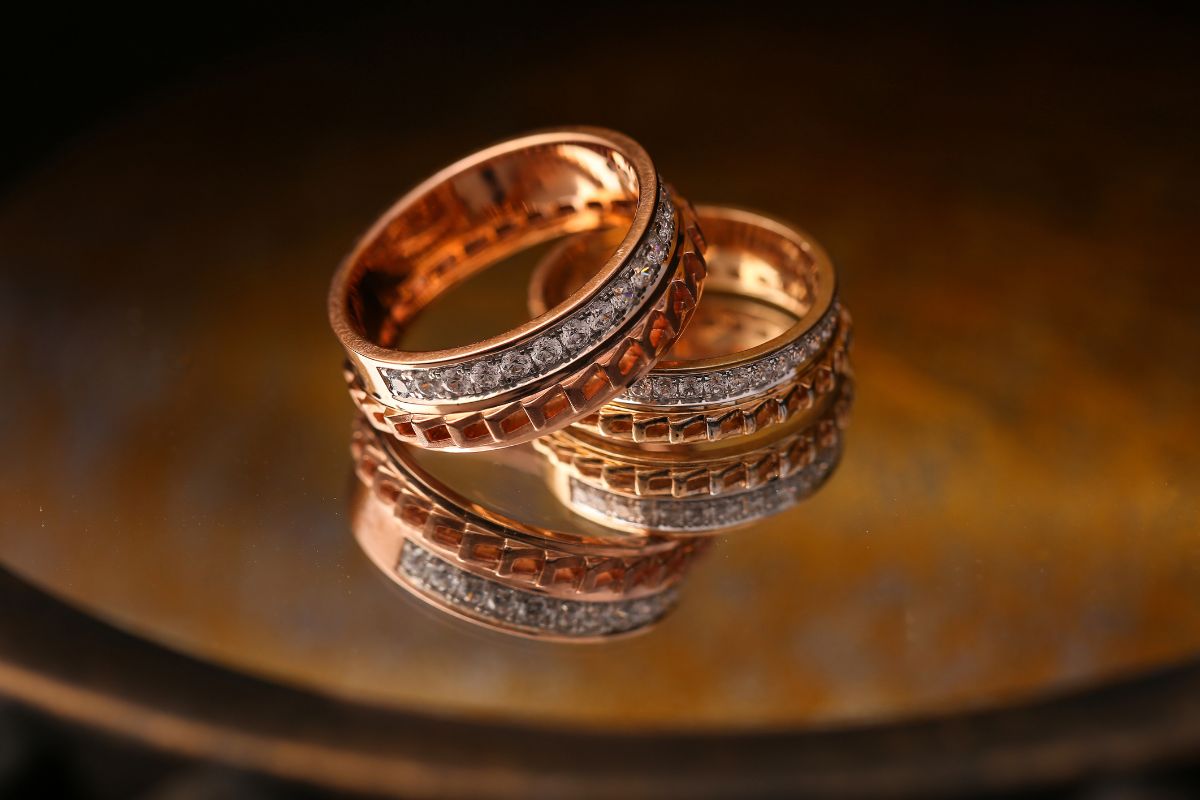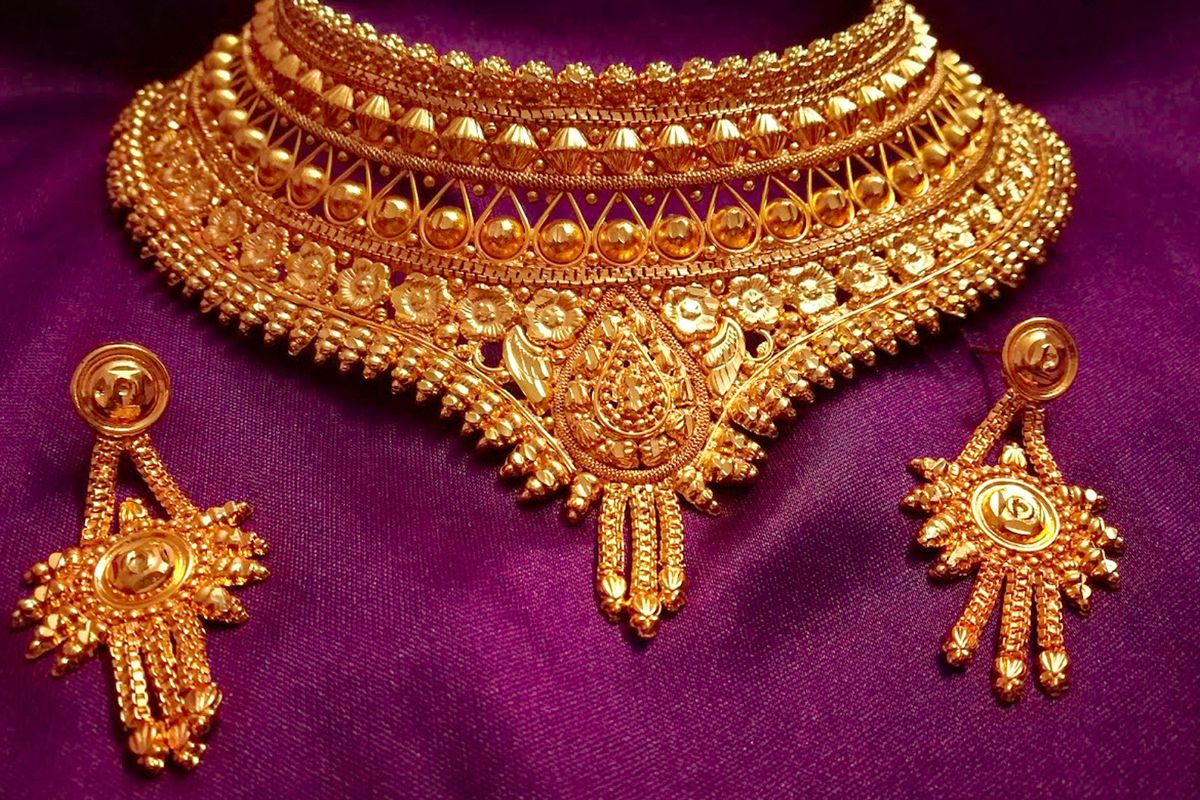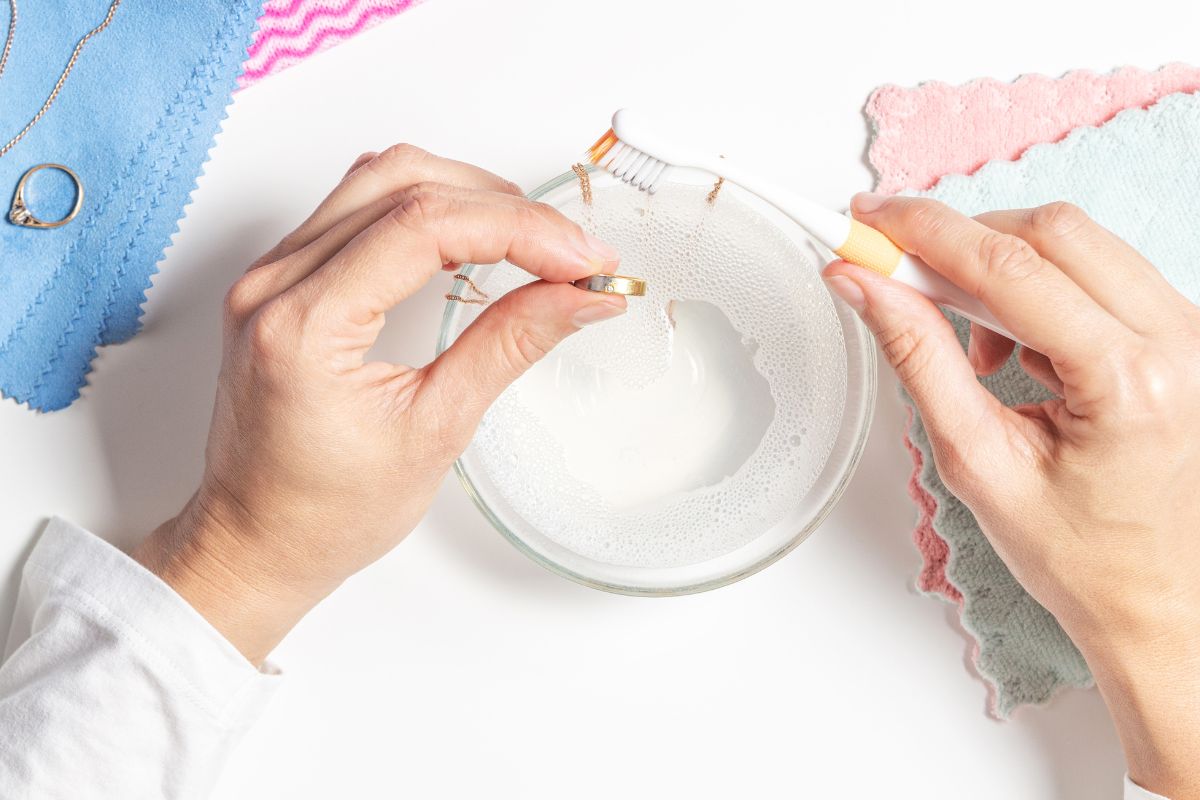
Is Rose Gold More Expensive Than Yellow Gold: Unveiling the Price Comparison
When you’re considering purchasing jewelry, you might be curious about the pricing differences between rose gold and yellow gold. Both are popular choices for their distinctive hues and luxurious appeal.
Rose gold is a blend of pure gold with copper and sometimes a bit of silver, giving it a warm, pinkish hue. This unique color has gained popularity in recent years for its romantic and vintage look. In contrast, yellow gold is the traditional choice and is usually alloyed with metals like copper and zinc to strengthen it while maintaining its classic golden color.
The price of gold jewelry, whether rose or yellow, primarily depends on the karatage, which signifies the proportion of pure gold in the alloy. Typically, the higher the karat, the more expensive the piece due to its higher gold content.
However, rose gold can sometimes be more affordable than higher karat yellow gold. This is because the copper used in rose gold is less expensive than the additional gold needed to create higher karat yellow gold.
It’s essential to note that market demand, craftsmanship, brand, and design can also influence the price, potentially making either rose or yellow gold more expensive based on these factors.
Understanding Rose Gold and Yellow Gold
Rose gold and yellow gold are both precious metals highly sought after for their beauty and value. Exploring their differences and various aspects will give you a better appreciation for each metal’s unique qualities.
Composition of Rose Gold and Yellow Gold
Rose gold is an alloy made by combining gold with copper and sometimes a small amount of silver. This mixture gives it a distinctive pink hue.
On the other hand, yellow gold is made from gold mixed with silver, copper, and zinc to maintain the natural color of gold while improving its strength.
The Color and Aesthetics

Rose gold has a unique pinkish hue, which ranges from subtle to more pronounced, depending on the copper content. In comparison, yellow gold boasts a bright, sunshine-hued color that has been the classic representation of gold for centuries.
Historical Significance and Usage
Yellow gold has been used throughout history, with evidence of its use stretching back to ancient Egypt. Meanwhile, rose gold became widely known in 19th-century Russia, earning the nickname ‘Russian gold’ and has been a fashionable choice ever since.
Physical Properties and Durability
Both metals are durable, but the alloy in rose gold makes it more resistant to scratches and tarnishing than yellow gold.
The higher the karat, the softer the metal, so 14k gold may be more durable than 18k gold for both varieties.
Allergenic Considerations
Nickel is a common allergen in gold alloys; however, rose gold usually contains just copper and silver, which are less likely to cause allergic reactions. If you have metal allergies or sensitive skin, rose gold might be a better option.
Care and Maintenance
To maintain the luster of rose and yellow gold, regular cleaning and polishing is recommended. Rose gold, in particular, may eventually display a patina that can be polished to restore its original look.
Popularity and Trends
Rose gold has seen a resurgence in popularity due to its romantic and contemporary appeal. Meanwhile, yellow gold remains a timeless choice, favored for its classic elegance and status symbol.
Symbolism and Cultural Significance
Gold often symbolizes wealth and prestige, while the rose tint in rose gold suggests femininity and love. As a result, rose gold is a popular choice for wedding rings and engagement rings.
Gold in Jewelry and Accessories

Both rose and yellow gold are used extensively in jewelry and accessories, including rings, earrings, necklaces, and watches. The choice often depends on personal preference and how the metal complements skin tones.
Comparing Costs and Value
The cost of rose gold and yellow gold can vary depending on karat and design, but generally, there’s no significant price difference. Labor and craftsmanship often play a larger role in the overall cost.
Consumer Considerations
When choosing between rose and yellow gold, consider lifestyle and maintenance as well as how often the piece will be worn. Each has its unique demands for care and may suit different fashion sensibilities.
Impact of Impurities and Alloys
The quality of gold is determined by its purity, expressed in karats. Alloys like copper or silver impact the color and durability of the final piece. Higher karat gold contains more pure gold but is also softer.
Market Dynamics and Availability
The availability of both rose and yellow gold is subject to market dynamics. While yellow gold has a more consistent presence in the market, the popularity of rose gold can influence its availability and price.
Differentiating Factors between Rose Gold and Yellow Gold
| Aspect | Rose Gold | Yellow Gold |
|---|---|---|
| 1. Composition | Gold alloyed with copper and a small amount of silver, giving it a rosy or pinkish hue. | Pure gold alloyed with metals like copper and zinc, maintaining a yellow color. |
| 2. Color Tone | Has a warm and romantic pinkish or reddish tone. | Has a classic warm yellow tone. |
| 3. Alloy Ratios | Higher copper content contributes to the rosy color; may also include silver or other metals. | Alloyed with copper and zinc in specific ratios to maintain the characteristic yellow hue. |
| 4. Popularity | Increasingly popular for modern and vintage-inspired jewelry; a trendy choice. | Timeless and always in style; a traditional and popular choice for various jewelry designs. |
| 5. Symbolism | Often associated with love and romance; the pinkish hue symbolizes affection. | Symbolizes wealth, prosperity, and traditional elegance. |
| 6. Versatility | Versatile and complements various skin tones; suitable for both contemporary and vintage designs. | Versatile and complements a wide range of gemstones; a classic choice for all types of jewelry. |
| 7. Maintenance | Requires minimal maintenance; may show scratches less prominently due to the alloy composition. | Requires standard maintenance; may show scratches more prominently compared to rose gold. |
| 8. Fashion Trends | Often chosen for modern and trendy designs, popular in fashion-forward and unique pieces. | A timeless choice, suitable for both contemporary and traditional fashion trends. |
When selecting jewelry, understanding the characteristics of rose gold and yellow gold is essential. Each metal has its unique distinctions that cater to individual preferences in aesthetics, durability, and budget.
Visual Distinctions
Rose Gold: Exhibits a distinctive pink hue due to the copper alloy mixed with gold, giving it a warm, soft glow. This pink tint offers a contrast against the natural color of gold.
Yellow Gold: Retains the classic golden luster that reflects the metal’s natural color, evoking a traditional and timeless appeal.
Material Composition and Karatage
Rose Gold: An alloy comprising gold, copper, and sometimes a small amount of silver for a delicate pink tone. The karat of rose gold determines its pinkness; higher copper content in lower karats deepens the color.
On the other hand, yellow gold is made of pure gold mixed with alloys such as zinc and copper. Higher karat gold implies greater purity and a richer yellow color, with 24 karat being pure gold.
Wearability and Lifestyle Suitability
Rose Gold: Considered more durable due to the inclusion of copper, making it suitable for everyday wear and less prone to scratching.
Meanwhile, yellow gold is soft at higher karats, making it less ideal for daily wear but highly prized for ceremonial pieces, such as engagement rings and wedding rings.
Price Variance and Budget Considerations
Rose Gold: Often more affordable than high-karat yellow gold because of the lower percentage of gold and the inclusion of less expensive copper alloy.
Meanwhile, yellow gold generally carries a higher price reflecting the value and status associated with gold. The higher the karat, the higher the cost.
Compatibility with Skin Tones and Settings
Rose Gold: Flatters a wide range of skin tones, especially those with cooler undertones, and pairs well with both modern and vintage jewelry designs.
On the other hand, yellow gold is highly versatile, complementing warmer skin tones and offering a classic look that suits various settings, from casual to formal.
Jewelry Design Preferences
Rose Gold: Popular in intricate jewelry designs and modern styles, rose gold works well with colored gemstones and in fashion-forward pieces.
Meanwhile, yellow gold is a time-tested choice for traditional and elaborate designs, preferred for its classic appearance in rings, necklaces, earrings, and beyond. Its adaptability in jewelry makes it a staple for various design preferences.
Rose Gold versus Yellow Gold in Modern Context

In this detailed examination, you’ll discover how rose gold and yellow gold differ in terms of current trends, fashion adaptability, the rise of alternative metals and alloys, and the economic factors that shape your preferences in modern jewelry.
Current Trends and Popularity
Rose gold has surged in popularity, especially among contemporary consumers who appreciate a vintage vibe in their accessories. Its soft, pinkish hue contrasts yet complements the enduring allure of the classic yellow gold.
On social media and in fashion magazines, you can easily spot celebrities and influencers flaunting rose gold pieces, evidencing its trendy status.
Adaptability in Fashion and Jewelry
Your choice between rose gold and yellow gold can signal different fashion sensibilities.
Rose gold is celebrated for its uniqueness and versatility in both vintage and modern designs. It pairs seamlessly with a range of gemstones and settings.
Yellow gold is a traditional staple that signifies luxury but is equally at home in contemporary and classic styles.
The Rise of Alternative Metals and Alloys
The jewelry market is seeing an influx of alternative options like platinum, palladium, and sterling silver, expanding the array of choices.
Each metal alloy, including rose gold and yellow gold, offers distinct advantages.
For instance, platinum is highly durable, while palladium is lighter and less allergenic.
Economic Factors Influencing Preferences
Your buying decisions may be swayed by economic factors such as cost and investment potential.
Yellow gold typically holds higher intrinsic value as a precious metal and is often chosen for both fashion and investment.
Following the Great Recession, the price of gold increased, leading many buyers to consider both rose gold and silver alloys as more affordable yet equally luxurious options.
Practical Advice on Selection and Care

Finding the perfect piece of gold jewelry involves considering your personal preferences, understanding the unique characteristics of different gold types, and knowing how to maintain their luster.
Whether you're drawn to the warm hues of rose gold, prefer the classic radiance of yellow gold, or are looking to make a fashion statement with a piece that suits your skin tone, informed choices ensure satisfaction and longevity.
Choosing the Right Gold for You
When selecting between rose gold and yellow gold, consider both personal preference and skin tone.
Rose gold, with its mix of gold and copper alloy, offers a distinctive, warm pinkish hue that can complement cooler skin tones or add a romantic touch to your jewelry.
Yellow gold, traditionally valued for its elegance and timeless appeal, flatters warmer skin tones and has been a popular choice for engagement rings and other rings for centuries.
Maintenance and Longevity of Gold Jewelry
To ensure your gold jewelry retains its beauty over time, regular maintenance is crucial.
This includes gentle polishing to remove any scratches, dents, or scuffs that can occur with daily wear.
Occasionally, taking your items to a professional jeweler for thorough cleaning and rhodium plating—especially for white gold items—can renew their shine and protect them from further damage.
Managing Allergies and Metal Sensitivities
For those with metal allergies or sensitivities, yellow gold and rose gold can differ in hypoallergenic properties.
Higher karat yellow gold typically contains fewer allergenic metals like nickel, making it a safer choice. However, the copper in rose gold can cause reactions for some.
Always check for the exact metal content and opt for alloys that favor zinc over nickel to reduce potential irritation.
Investing in Gold Jewelry for the Long Term
Gold jewelry is often viewed as an investment.
The value and cost can depend on several factors including karat weight, craftsmanship, and market demand.
While the price of gold fluctuates, high-quality pieces maintain their value better over time.
Investing in gold jewelry requires considering both the current fashion trend and its potential as a long-term asset, making choices that are both stylish and likely to appreciate in value.
Frequently Asked Questions
When considering the purchase of gold jewelry, you may find yourself weighing the options between rose gold and yellow gold. In this section, we'll explore common inquiries regarding their pricing, investment value, and aesthetic considerations.
What are the price differences between 18k rose gold and 18k yellow gold?
18k rose gold and 18k yellow gold generally have comparable prices because they contain the same percentage of pure gold. The final cost can be influenced by the design, brand, and any additional materials used in the jewelry piece.
Which is considered a better investment: rose gold or yellow gold?
Yellow gold is often viewed as the better investment due to its timeless appeal and higher demand. While rose gold has gained popularity, it's still less traditional and may not have the same resale value.
How do rose gold and yellow gold compare in value?
Rose gold and yellow gold are quite similar in value when considering their gold content. However, market demand and current trends can affect their value at any given time.
What are the cost implications of choosing rose gold over white or yellow gold?
Choosing rose gold over white or yellow gold does not typically result in significant cost differences. The choice often comes down to personal preference or style considerations.
Which gold color offers the better appearance on different skin tones?
This is subjective, as rose gold can offer a warm hue that complements many skin tones, whereas yellow gold has a classic glow that has been cherished for generations. It truly depends on your personal style and the look you wish to achieve.
How does the worth of rose gold compare to that of yellow and white gold?
The worth of rose gold is generally on par with that of yellow and white gold. This is assuming the karat weight is the same.It is the rarity, craftsmanship, and design of the jewelry that often determine its final worth.
Checkout some of our top collections:
Comments
Leave a comment
Please note, comments must be approved before they are published.











vishnu
July 29, 2024
Keep up the great work! Thank you so much for sharing a great posts.